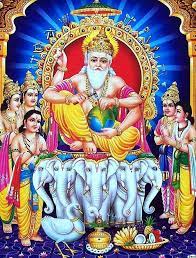Vishwakarma Caste

Vishwakarma Caste describes a Brahmin Caste of India who claims to be descendants of Lord Vishwakarma. They are a caste of priests, engineers, architects, sculptors, temple builders and artists. The term is applied to five sub-castes; blacksmiths, carpenters, coppersmiths, goldsmiths and sculptors. Vishwakarma Caste is also known as Vishwabrahmin or Dhiman Brahmins or Jangid Brahmins. The Vishwakarma Caste also claim to have been the spiritual guides and priests and their position in the society survives in the saying the ‘Vishwabrahmana is guru to the world
The community claims to be descended from the god Vishvakarma, who is considered by Hindus to be the divine architect or engineer of the universe. He had five children — Manu, Maya, Tvastar, Shilpi and Visvajna — and these are believed by the Vishwakarma community to have been the forebears of their five subgroups, being respectively the gotras (clans) of blacksmiths, carpenters, bell metalworkers (metal casters), stonemasons and goldsmiths. It is not known whether these five subgroups historically practised endogamy, which is a frequently-found feature of the Indian caste system
The origin myths of the Vishwakarma community were first consolidated in the early 18th century, during the British colonial rule. These myths were compiled in the Vishwakarma Puranam, whose original manuscript is undated but was most probably created in the mid-17th or 18th century. According to a popular myth recorded in the Vishwakarma Puranam, the five children of the god Vishwakarma served the gods as artisans, and possessed the ability to create things by simply visualising them. They had conserved their veerya by being celibates, and lived in a fort on the coast of Ilangapuri (Sri Lanka). The fort was made of lodestone, and the enemy weapons thrown at it were stuck to its walls, rendering it invincible. Their chief enemy was Karunakaran, a vassal of the Chola emperor. In order to defeat the Vishwakarmas, Karunakaran planted many beautiful women (Brahmin women according to some versions of the legend) in the fort. These women married the Vishwakarmas, thus destroying their spiritual power, and learned the secret that a certain type of poisonous grass could be used to burn up the fort. Using this secret, the enemy blew up the fort, and the Vishwakarmas were scattered in various areas, where they were forced to work as artisans and craftsmen for mortal humans.

